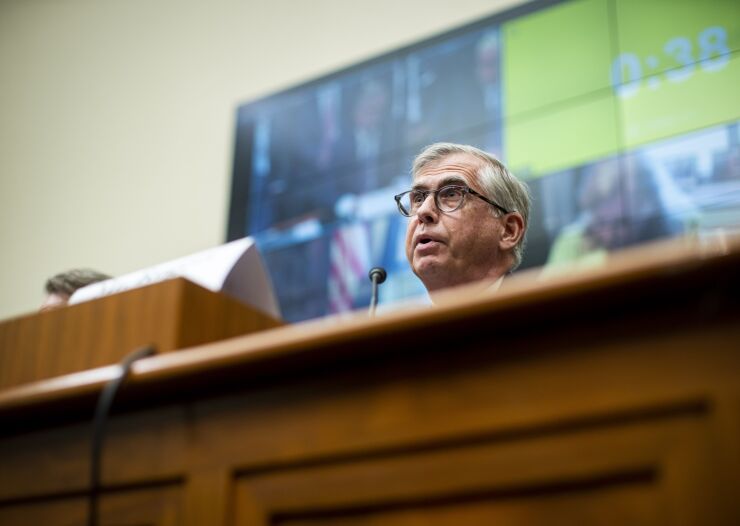A pesky expense line item on Truist Financial's income statement is rising at exactly the wrong time.
A category of noninterest expense called "other expense" increased 89% year over year to $172 million in the third quarter. The line includes certain "operating losses" that Truist Chairman and CEO Bill Rogers told analysts are "too high" during Tuesday's quarterly earnings call.
To be sure, that amount was only 4.8% of overall noninterest expenses, and the $545.6 billion-asset Truist is not the only bank trying to hold back operating losses. Last week, Wells Fargo reported $2.2 billion in operating losses during the quarter, with CEO Charlie Scharf
But Truist's "other expense" was just 2.4% of overall noninterest expenses a year earlier.
Rogers acknowledged that he's "cranky" about the higher operating losses but says he sees improvements coming down the line — though the timeline is taking longer than he anticipated.
Still, even as certain expenses rise and operating losses remain elevated, Truist executives are holding steady to their commitment to achieving positive operating leverage this year.

Positive operating leverage means that Truist's revenues would have to grow at a faster pace than expenses, even as the company keeps investing in technology upgrades and making bolt-on acquisitions like the three it announced between early August and early September.
On Tuesday, Truist officials did not specify what exactly drove up "other expense" or why the bank is incurring operating losses. But after saying that operating losses are elevated, Rogers suggested that a contributing factor was clients' fraud losses.
"While we made a purposeful decision to proactively refund our clients for fraud losses, our overall goal is to reduce them significantly to improve our results from the client experience," Rogers said during the call. "This is an industrywide phenomenon, and part of our technology spend is directly related to this effort. These investments include efforts to enhance identity, authentication and fraud detection, among others."
After the call, a Truist spokesperson said the higher operating losses are not tied to the 2019 merger between BB&T and SunTrust Bank, which formed the juggernaut now known as Truist, or to the February
"Increased fraud is happening across our industry," the spokesperson said in an email. "However, we have taken a client-first approach to help rectify these issues and make our clients whole if they're victimized by fraud."
Analyst Christopher Marinac of Janney Montgomery Scott said Truist, like many of its peers, is trying to mitigate instances of fraud by employing better technology.
"The reality is they're doing all kinds of upgrades because they have to catch up with the Jones' — the JPMorgans, the Bank of Americas, the U.S. Banks — so there's a lot of buildout that continues to happen" in terms of technology enhancements, he said.
For the third quarter, Truist said that costs excluding merger-related charges were 2% higher than the same quarter last year. The uptick was attributed to the uptick in operating losses.
While it may not be visible "quarter to quarter" that Truist is moving closer to positive operating leverage, the company is on track to do so for the full year, Rogers tried to assure analysts.
Merger costs keep coming down and the decommissioning of old data centers, which will wrap up by the end of the year, is mostly finished, he said.
Moreover, achieving positive operating leverage is going to be "a core tenet" and "a hallmark" of the company, he added. At the same time, the company will continue to take advantage of opportunities to invest in certain parts of its business, much like it has done in recent months with the acquisitions of a
"We just can't be wed to [positive operating leverage] quarter to quarter when we see an opportunity," Rogers said.
When analyst Gerard Cassidy of RBC Capital Markets asked Rogers to forecast the company's ability to secure positive operating leverage next year, Rogers declined to give guidance.
"Obviously there are a lot of puts and takes [and] there's a lot of uncertainty headed into [2023]," Rogers said. "But positive operating leverage is going to be a core tenet of what we do."






